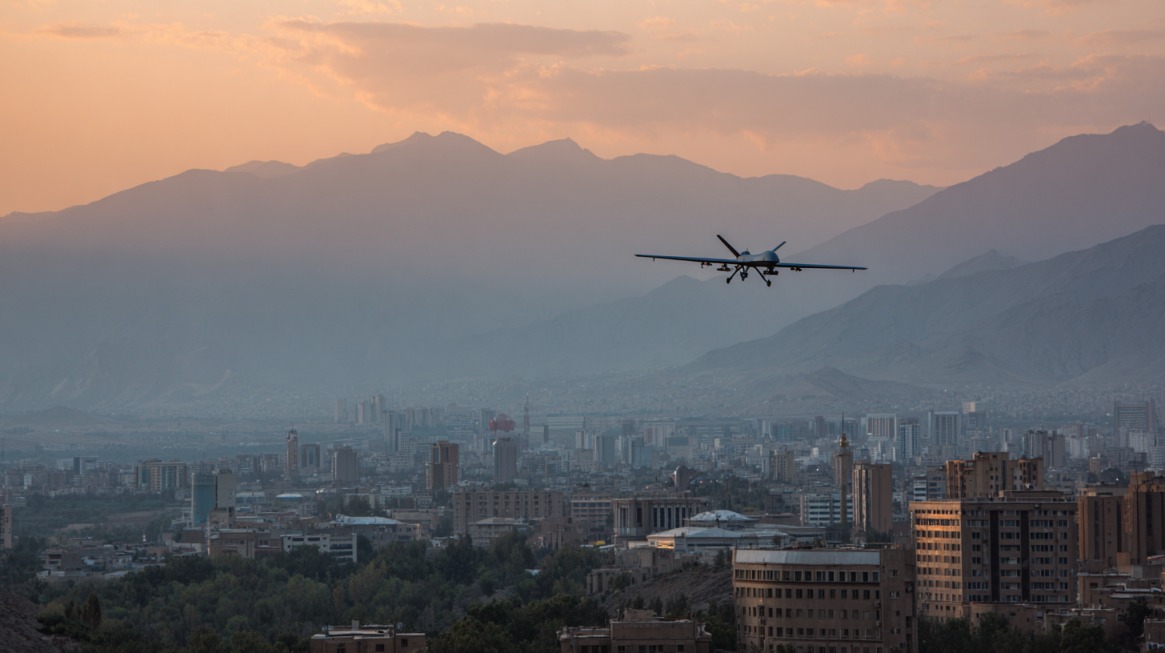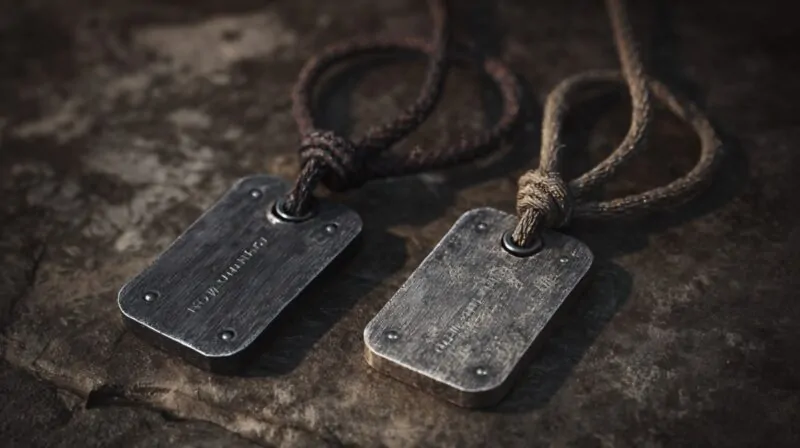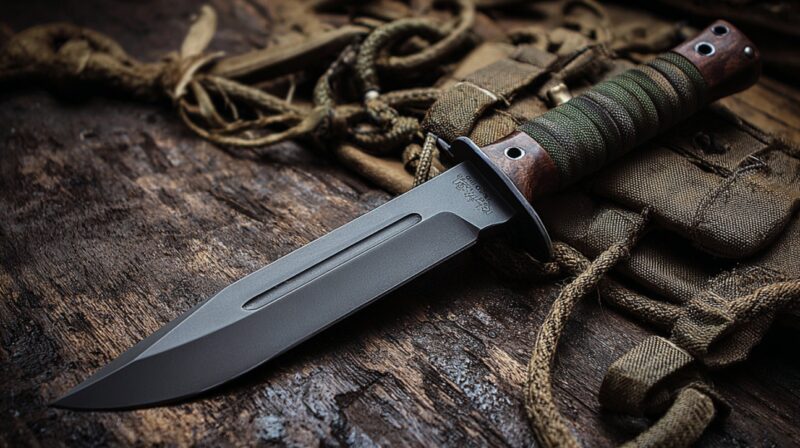Modern warfare has shifted dramatically with the emergence of loitering munitions and unmanned aerial systems. Among the most prominent examples is Iran’s Shahed-136 drone, which has quickly drawn attention for its strategic application in regional conflicts and proxy engagements.
Shahed drones have altered traditional military calculations. Their affordability, range, and adaptability enable Iran to project power without conventional force deployment.
Long-range attacks against infrastructure, saturation swarm tactics, and proxy usage position these drones as tools with significant operational value.
Iran’s Shahed drones represent a serious development in asymmetric warfare. Through a blend of cost efficiency, range, and scalability, Iran has weaponized low-tech ingenuity to challenge high-tech adversaries.
The Shahed-136 Technical and Tactical Overview
| Specification | Detail |
|---|---|
| Length | Approximately 3.5 meters |
| Wingspan | Approximately 2.5 meters |
| Total weight | Around 200 kilograms |
| Warhead payload | 30 to 50 kilograms |
| Range (Standard) | 1,000 to 2,500 kilometers |
| Range (Shahed-136B) | Up to 4,000 kilometers |
| Guidance system | Inertial navigation with GPS correction |
| Imaging optics | Basic, non-advanced visual targeting |
| Launch system | Truck-mounted rail launcher, typically deployed in pods |
Shahed-136 represents a practical, scalable offensive tool designed for long-range loitering strikes. With a delta-wing airframe and straightforward construction, it emphasizes reach and affordability over sophistication. Its tactical value comes not through precision but through volume and endurance.
Designed for simplicity and mass deployment, the Shahed-136 has gained attention for its capability to penetrate air defenses through saturation. It fills the role of a loitering munition, a single-use drone programmed to strike and destroy its target without return.
Launch systems are configured to fire multiple drones rapidly, making it ideal for swarming tactics.
Mounted on commercial trucks, these mobile platforms can be concealed or moved easily across terrain. Once deployed, the drones fly low to avoid radar and converge on targets in waves.
Swarming tactics are a central operational feature. Multiple Shahed-136 units fly in coordination, creating confusion in enemy radar systems and forcing defenders to engage with expensive missile interceptors.
Iran’s Defense Doctrine and Asymmetric Strategy
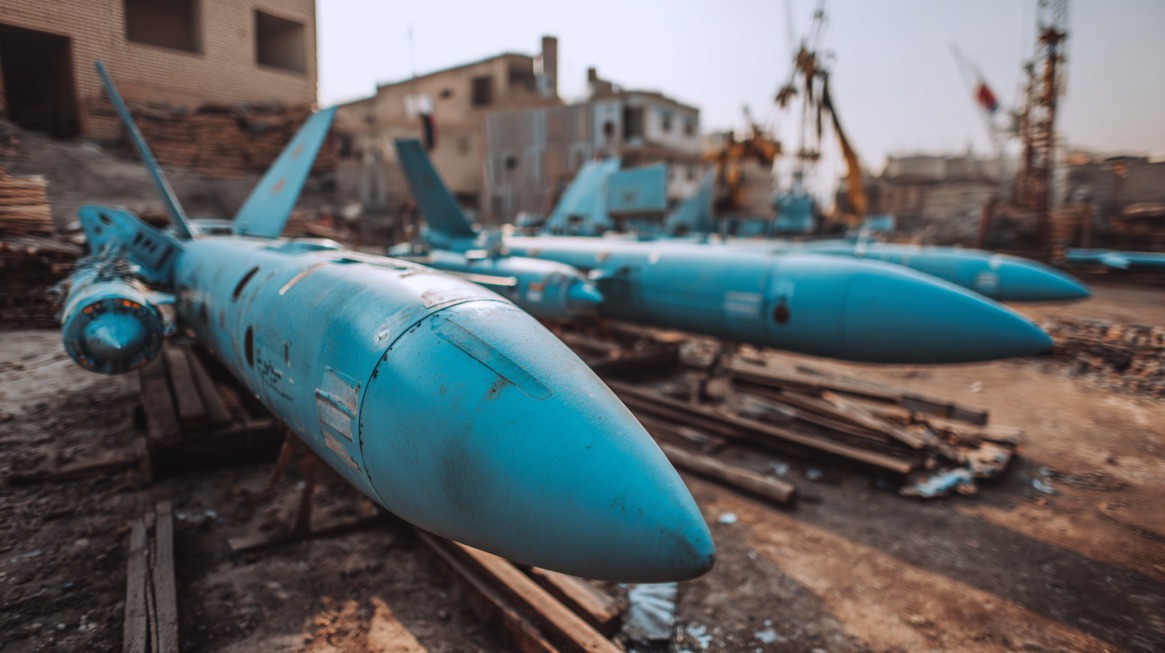
Iran’s defense posture relies on asymmetric warfare principles shaped by decades of external pressure.
Economic sanctions cut off access to advanced weaponry, while diplomatic isolation forced innovation within domestic borders. Instead of competing in conventional terms with Western or regional militaries, Tehran pursued strategic self-reliance.
A cornerstone of this strategy lies in the cultivation of an indigenous defense industry.
- Flexibility
- Cost-efficiency
- Rapid prototyping
Programs such as “Speed” channel state resources into research and fast-track production.
One of the most notable contributors to Iran’s UAV success is Sarmad Electronic Sepahan Co., which manufactures essential electronic and navigational components.
- In ground warfare, drones provide forward reconnaissance and tactical strike support
- In naval strategy, they enhance surveillance of strategic waterways like the Strait of Hormuz
- In cyber-electronic operations, drones act as platforms for signal disruption or ISR coordination
These systems operate without dependence on air superiority. Instead, they function as mobile, expendable, and often semi-autonomous assets.
Constant adaptation and integration of new features ensure Iranian drones remain relevant and disruptive. Strategic thinking behind Iran’s drone doctrine is not defined by technology alone, but by how it is deployed.
Flexibility, decentralization, and denial are central. Each drone sortie is both a tactical action and a psychological tool, reinforcing Tehran’s broader deterrence posture.
The Drone’s Role in Asymmetric Warfare
Shahed-136 illustrates how low-cost engineering can undermine expensive defense systems. It can be produced for between $20k and $50k, yet compels adversaries to use advanced missiles costing millions.
As a loitering munition, its goal is not pinpoint precision, but area denial and psychological disruption through volume.
By enabling precision strikes without risking pilots, these drones provide a low-risk tool for long-range engagements. They serve actors that cannot contest control of airspace in traditional terms.
Tactical advantages arise through unpredictable flight paths, swarm deployment, and mobile launch capability.
Iran’s program showcases resilience. Each sanctions round prompts iteration. Foreign components are reverse-engineered or substituted with locally developed replacements.
On-the-ground feedback, especially through Russian use in Ukraine, feeds into rapid R&D cycles.
Warfare increasingly favors adaptability over elegance. Precision-guided missiles and complex drones serve different purposes, but cost-effective systems like the Shahed-136 fill a gap. They provide the means to disrupt, distract, and degrade the technological advantage of larger forces.
Operational Use and Global Export
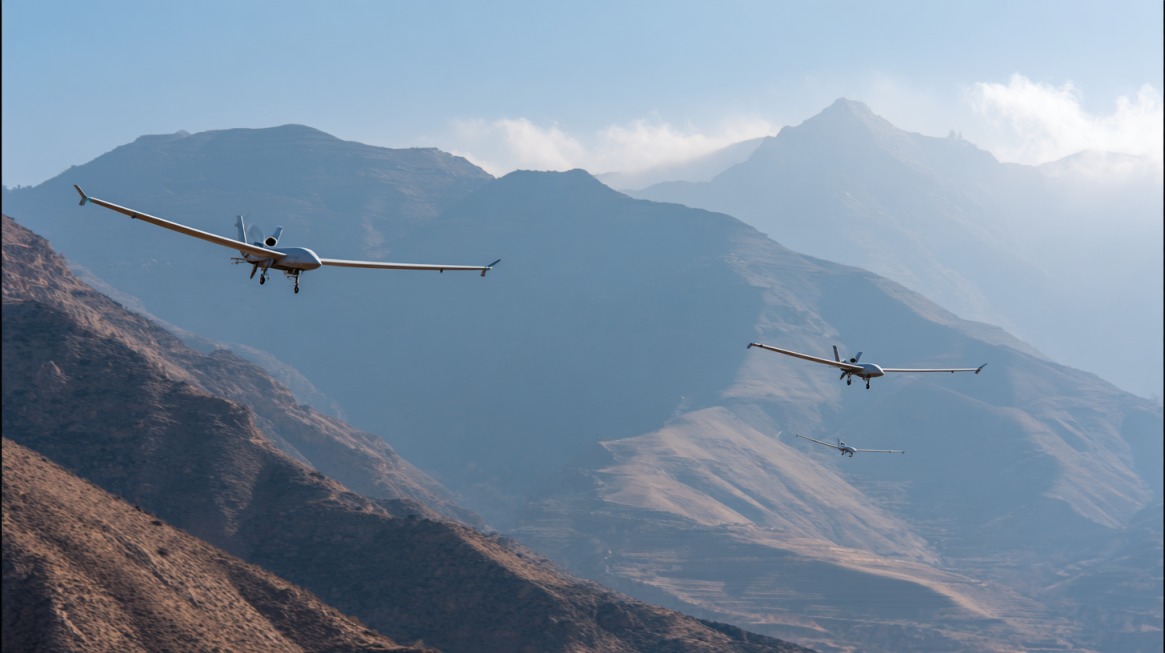
Shahed-136 drew international scrutiny after being deployed by Russia in Ukraine. These drones were used to strike energy infrastructure and civilian utilities, causing outages and disruptions during critical phases of the conflict.
Their effectiveness lies in the ability to reach widely dispersed soft targets while remaining cost-efficient. Iranian engineers, closely monitoring their performance, reportedly use operational data to guide iterative improvements in future designs.
Combat deployment allows Iran to accelerate development cycles.
- Recalibrate strike algorithms to increase target hit rates
- Upgrade GPS and inertial navigation systems
- Test new warhead compositions and fuse types
- Reengineer structural materials for increased flight endurance
These field-tested adjustments result in rapid enhancement with every deployment, building a drone fleet that evolves through actual battlefield feedback.
Iranian-aligned non-state actors have adopted the Shahed drone as part of their offensive strategies.
- Airports in Saudi Arabia and the UAE
- Oil production and refining facilities
- Naval vessels operating in strategic waterways
Such activity gives proxies the ability to engage in operations that mimic those of formal militaries. In doing so, Iran projects force by proxy, allowing it to disrupt adversaries without direct engagement.
The Shahed-136 in a U.S.-Iran Conflict
Shahed-136, with a standard range of up to 2,500 kilometers, poses a credible threat to American military infrastructure throughout the Middle East.
- U.S. airbases in Iraq and Syria
- Naval assets in the Persian Gulf
- Intelligence and logistics hubs in Jordan and Bahrain
- Infrastructure in parts of the eastern Mediterranean territories
Discussions about hypothetical deployments from Venezuela or Cuba reflect how drones challenge long-standing assumptions about safe distances and operational sanctuaries.
Even without confirmed deployment in those regions, the strategic conversation shifts simply by the possibility.
Drone swarms add complexity to any defense posture. Air defense systems are built to intercept high-speed aircraft or ballistic missiles. A barrage of slow, low-flying drones presents different challenges.
- Sensor overload due to high target volume
- Depletion of expensive interceptor munitions
- Gaps in radar detection caused by low radar cross-section
- Tactical confusion during mass saturation attacks
Psychological warfare plays a role equal to physical destruction. Populations and military personnel react to the persistent threat of unmanned aerial systems in ways that alter behavior and readiness.
An attack may cause limited structural damage, yet achieve massive strategic effect if it instills uncertainty and hesitation.
Final Thoughts
Shahed drones symbolize a shift in modern asymmetric arsenals. They extend Iran’s military reach, empower non-state allies, and challenge conventional doctrines of force application.
Ignoring their evolution poses strategic risks. Underestimating cost-effective drones may leave critical systems exposed and erode technological superiority.
Shahed-136 likely serves as a template for future drone warfare. Non-peer nations will study its success, replicate its modular design, and adopt similar systems in conflicts where conventional parity is unattainable.
Related Posts:
- Transgender Military Ban Resurfaces Under New Trump Order
- Does New Balance Offer a Military Discount in 2025?
- What Does 1B4X1 Stand For? An Inside Look at Cyber…
- The Role of Underwater Drones in Modern Naval Warfare
- Swarm Drones - The Future of Warfare is Already Here
- Eyes in the Sky - The Role of a Military Satellite…

